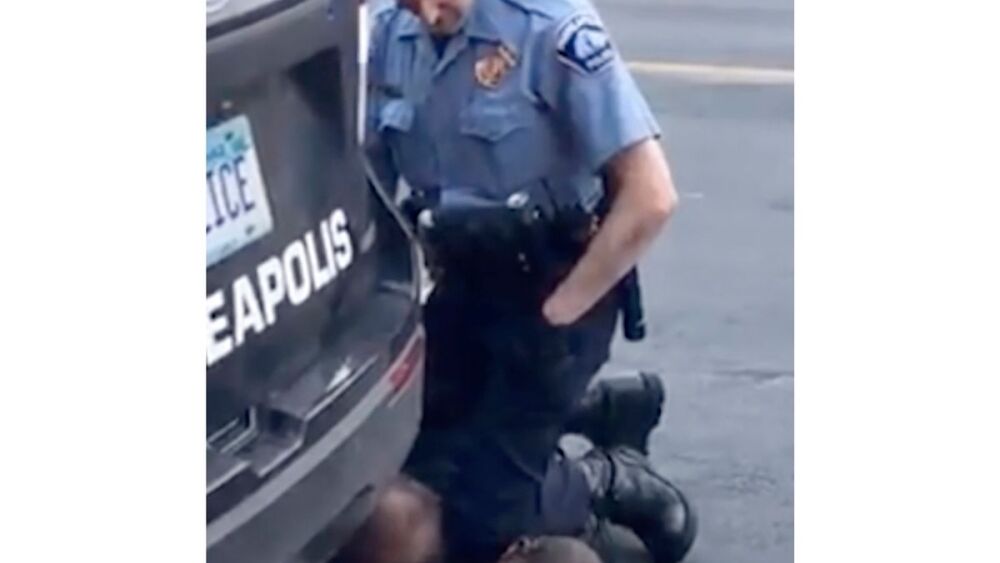Since the original publication of this column, new details have emerged and Derek Chauvin, the former Minneapolis police officer, has been charged with both manslaughter and third-degree murder in the death of George Floyd. Third-degree murder is a unique legal construct; it replaces the actual malice element of murder with a “depraved heart” component that requires the prosecution prove that, rather than an intent to kill, the defendant acted with utter indifference about whether death could result. It is looking more and more like such is the case here.
This article was originally posted May 29, 2020. It has been updated with new information.
The heated exchanges in the aftermath of George Floyd’s death at the knee of a [former] Minneapolis police officer have escalated into rioting, looting and violence.
From the outset, the entire incident is sickening. The conduct of the two [former] officers we could see in the video was despicable in every way and it cost a man his life. All of the anger, frustration and emotional fatigue that has followed is entirely understandable. Nevertheless, it is essential that we recognize this teachable moment. If we don’t take a step back and learn as much as possible from this tragedy, then we will all be complicit in the next tragedy.
To understand the EMS implications, I believe it is important to understand the law surrounding this case
Murder or manslaughter?
Because just the word “murder” stirs up so much angst and anger, it is important to distinguish between murder and manslaughter so that we might temper the passion with rationality.
Generally, murder is the killing of one human being by another with malice aforethought.
In determining whether any killing is the result of malice aforethought, we must ask three questions:
- Was there an intent to kill?
- Was there an intent to cause serious bodily injury?
- Did the person act with awareness of high risk that death or serious bodily injury would result?
On the limited information we have available to us, it does not appear that the officer specifically intended to kill or seriously injure Mr. Floyd.
The third question poses a different problem. At this moment on the information presently available, we simply don’t know the answer. If we judge body language and other non-verbal cues, it just doesn’t look like the officer acted with awareness of high risk that death or serious bodily injury would result – although, we’re about to find out, he was very, very wrong.
Manslaughter, on the other hand, is a different – much easier to prove – charge. As was the case here, a killing of a human being by another human being is a homicide and that rabbit hole is very deep, so allow me to simply sum it up. If we assume the officer did not intend that Floyd die, but it does appear the officer breached a duty of care, the death was manslaughter that was the result of criminal negligence. Plain, simple and tragic. While a murder charge may be difficult to prove beyond a reasonable doubt, I predict that a manslaughter charge will have this former officer thinking about this from a jail cell for a very long time.
Negligence and excessive force
If you have been reading my column for a while or attended one of my lectures, you already know that negligence requires the result (in this case, death) was caused by some breach of duty. To determine whether there was a breach of duty here, I called on a very old and dear friend who is both a law enforcement officer and a former paramedic partner of mine.
He watched the video and related to me that, in his training and experience, the knee to the neck, in this particular case, appeared to be an excessive use of force. “We are trained,” he said, “that proper use of force is limited to the amount of force reasonably necessary to affect an arrest.” He went on to tell me that the knee to the neck, in the context of the video, is not something that law enforcement officers are trained to do in situations like the one here; it was not, in his opinion, reasonable. Moreover, he said, “even in the most difficult of arrests, we still have a duty to protect the suspect as much as possible … and that is what these officers should have done and they just didn’t.”
He did describe a technique called carotid restraint (not a choke hold) that is used sparingly in very critical situations where an officer is at a physical disadvantage and needs to safely take control of a violent individual. This did not appear to be such a case. Floyd was already handcuffed and there were four officers on hand to maintain control if necessary.
When are you legally responsible to get involved?
While I am absolutely certain that we can all agree this situation is horrific and should never have happened, there are collateral matters that demand the attention of EMS providers. The myriad comments on social media suggest that misinformation about EMS duties is ubiquitous and potentially perilous. Let’s fix that.
In the video, a bystander identifies herself as an off-duty first responder. Much is being debated about what she did and should have done. The reality is that, in this situation, identifying herself as a firefighter did not create a duty for her, nor did it alter the duties of the police officers on scene. In fact, my law enforcement friend confirmed for me that officers rarely, if ever, allow civilians to get involved in active scenes.
Read next
Stand up, and speak out
EMS providers know positional asphyxiation can kill, and have a professional and moral obligation to object to it
Unless otherwise codified, off-duty EMS providers do not have an inherent duty to insert themselves into any situations. You can have a dozen Star-of-Life stickers on your Ford F150 while wearing an EMS T-shirt and hat, but if you are not on-duty, you generally have no duty.
The only times (again, generally) that a duty would be imposed would be:
- If you set in motion the event that resulted in the harm
- If you verbally committed to assist to the exclusion of another
- Where there was already a special relationship such as parent, guardian or spouse
Otherwise, there is no requirement for you to insert yourself into a situation.
What does identifying yourself as a first responder mean for your legal involvement?
In this particular instance, nothing. She could have identified herself as the 2019 Paramedic of the Year for the State of Minnesota and the police officers would have no duty to accept her assistance, thus she would have no liability.
While I get that everyone is mad at the police officers involved here, we must remember that in the moment, this was just another police call, and the last thing officers want – ever – is for civilians to incorporate themselves into it. Remember, from the perspective of the officers, this firefighter is a total stranger amongst a group civilians attempting to get involved.
Where is the line between legal responsibility to intervene and personal safety?
Legal duties aside, the situation also raises questions about the ethical duties of the first responder in this video. Some have commented that she should have forced herself into the scene and helped Floyd.
Well, I guess in a perfect world, she would have broken her way past the officers and rushed to save Floyd’s life. In reality, the first officer would have had her on the ground before she could get within 10 feet of Floyd and, if she had managed to evade the first officer, she would have ended up on the ground with 50,000 volts and a few milliamps of electricity pulsing through her convulsing body from the TASER.
As we all learned in school, personal safety always supersedes.
Perhaps, she could have approached the situation differently. Maybe if she had identified herself by her level of EMS training, pointed out what problem she specifically saw, and how she could help, the officers might have been more receptive.
If we don’t learn from our past, we are doomed to repeat it
As EMS providers, the only skill more valuable than medical care – in any situation – is communication. This case was a perfect example of why it is imperative for providers at all levels to remember that non-EMS providers don’t understand what you mean; they only hear what you say. To these officers, demanding a pulse was just more noise. Perhaps calmly pointing out to the officer doing crowd control – one professional to another – that the person on the ground appeared to be apneic, may have yielded a different response. Maybe.
Unfortunately, we just can’t ever know what would have or could have happened if any of a thousand things had been different in this or any other situation. We do know, however, that what occurred here failed everyone – especially Floyd and his family, and if we have any duty whatsoever, it is to apply the lessons learned from this tragedy and to be better.
Read next
When does legal liability to an EMS patient begin?
The Legal Guardian answers a reader's question about if legal liability starts at time of dispatch or time of patient contact





